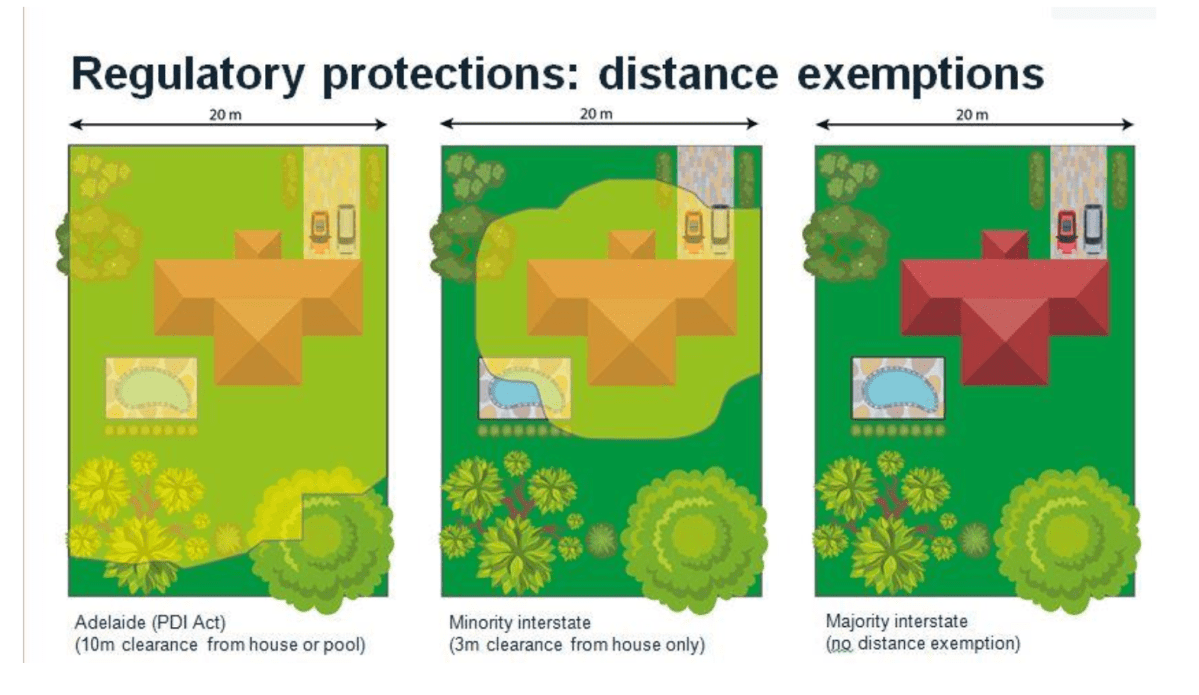Govt strengthens urban tree protections
The state government has strengthened protection for trees in South Australia’s planning system – a move that has been enthusiastically welcomed by environmentalists and decried by the development lobbies.


Trees lining a street in the City of Unley, a council area that has struggled with dwindling tree canopy. Photo: Thomas Kelsall/InDaily
Planning Minister Nick Champion today revealed the government’s response to the findings of a parliamentary inquiry into Adelaide’s urban tree canopy, which last year recommended widespread changes to South Australia’s planning regime to enshrine greater protections for trees.
The sweeping reforms come into effect immediately, except for a period of grace for developments approved before the changes were gazetted yesterday.
The parliamentary inquiry came after a University of Adelaide study in 2022 found that South Australia’s tree protection laws are among the weakest in the nation and “markedly less stringent” than those enforced by councils in New South Wales, Victoria and Western Australia.
The parliamentary committee recommended abolishing South Australia’s “10-metre rule” whereby a property owner can legally remove a tree if it is within 10 metres of a house of swimming pool.
The committee said each tree removal application should be assessed on merit by state or local planning authorities. The government has instead decided to shorten the exemption space to three metres.

A diagram of the tree felling exemption at 10 metres, three metres and one metre. Image: Conservation Council SA
The government has also broadened the definition of trees that require development approval to remove, which are classed as “regulated” and “significant” trees.
The trunk size definition for a regulated tree shrinks from two metres to one metre while significant trees go from three metres to two.
Offset fees for removing these trees also increases, although not as much as the committee had asked for.
The cost of removing a regulated tree rises from $326 to $1000 and from $489 to $1500 for a significant tree. The committee had asked for $3000 and $4000 fees respectively.
The government’s changes come into effect immediately, although development applications approved before May 16 will be exempted from the changes for a year.
Champion claimed the changes would see South Australia go “from having the weakest tree protection policies in the country to the most comprehensive”.
“Tree protection is the number one issue that is raised with me, and these new policy additions means a greater number of trees in this state will be protected from the chop,” he said in a statement.
Tom Morrison, the founder of tree education and advocacy group 20-Metre Trees, told InDaily the government’s changes were “massive”.
“It would have to be probably the single biggest community planning win since who knows how long,” he said.
“I can’t understate just how big a deal this is from a community perspective given the sheer volume of public frustration over the unnecessary loss of trees.
“And this will go a long way to tackling that issue even if it doesn’t go probably as far as they need to.”

Photo: Bension Siebert/InDaily
Morrison said the changes to trunk circumference definition would bring South Australia in line with the rest of the country.
But he disputed that it would make South Australia’s tree protections the best in the nation, even if it is “a world of difference from what we have now”.
“It will at least require people to think before they get the chainsaw out,” he said.
“Because at the moment, there’s not enough thinking before the chainsaw comes out, and so tree removal is always the first option.”
Morrison also denied the changes would have an impact on construction of homes, arguing that tougher tree protections in New South Wales and Victoria have not frustrated housing supply.
“People constantly make a link between better tree protections and less housing – it’s not a binary argument and it never has been,” he said.
But the development lobby and the Property Council have come out against the changes.
Liam Golding, Urban Development Institute of Australia SA division CEO, said the changes added “cost and complexity at a time when we desperately need housing development”.
He said the changes could lower the number of houses built on development land due to the positioning of trees.
“I would contend that the development industry probably plants more trees than any other group in the state,” he said.
“What we have though is a possible decrease in yield in some locations due to single trees that are positioned in an unfortunate location.
“Ultimately, with the costs going up, with the time for assessment going up, it’s going to mean that there’s more uncertainty and things are going to take longer and that’s going to lead to more cost.”
Golding also suggested the change could lead to property owners cutting trees before they reach the one-metre circumference definition.
SA Property Council executive director Bruce Djite also criticised the regulation changes.
“Whilst recognising that these regulations were formed in response to community sentiment, the regulations do not appear to account for the stark reality of our housing crisis and the impact they will have on development,” he said.
“Simply put, these regulations mean additional cost, delays and red tape for industry and will only slow housing supply.”




